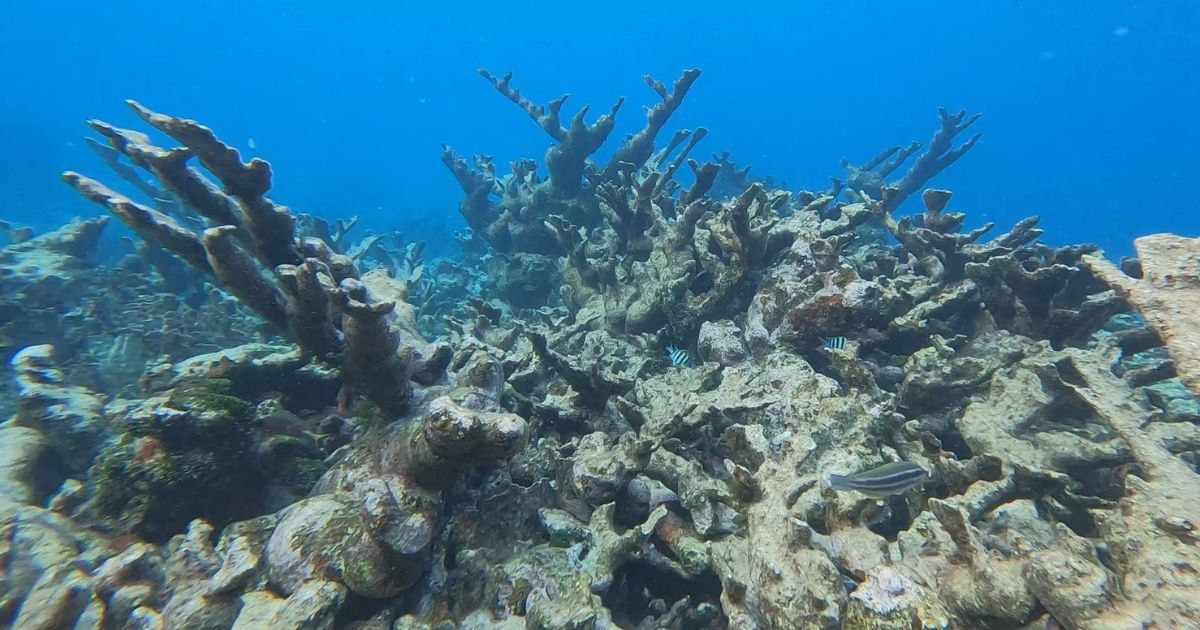
The massive mortality of the species Acropora palmata, one of the most ecologically significant due to its role in coral reef formation, has been confirmed in the Granma National Park.
The Eastern Center for Ecosystems and Biodiversity (Bioeco), based in Santiago de Cuba, confirmed through Facebook that its specialists, along with local technicians, documented the tragic event during a recent monitoring session.
Jorge Antonio Tamayo Fonseca from Bioeco reported that during several dives in the area, it was confirmed that 99% of the Acropora palmata colonies showed signs of old mortality, likely as a result of the recent coral bleaching event that occurred in 2023.
This phenomenon, exacerbated by rising water temperatures, pollution, and other environmental factors, has had a devastating impact on coral health.
During the monitoring, which covered a distance of 7.5 kilometers, 3.5 of which were outside the Reef Crest in the Cabo Cruz area, 14 study stations were established, each spaced 250 meters apart.
Five individuals participated in the execution of the protocol, filming videos at each station to gather crucial data on coral health.
Tamayo emphasized that corals are extremely sensitive to changes in water temperature, quality, and increasing acidity, among other stress factors.
When corals are under stress, they can expel zooxanthellae, organisms that provide them with their color and most of their nutrients. Without these, corals undergo a process known as bleaching, which can lead to their death.
Bioeco, through the Biomar group, remains committed to the research and monitoring of marine ecosystems, participating in numerous national and international projects.
In 2023, Cuban scientists eradicated the first occurrence in the country of Unomia stolonifera, an invasive species of white coral, which was discovered in September 2022 at the Bacuranao cove, in eastern Havana.
The species, which scientists believe must have arrived in Cuba from Venezuela, was confined to a one-square-meter area of the wall of the bucket, at a depth of 11 meters, attached to a layer of encrusting calcareous red algae, according to a scientific study cited by the Cuban Science Network (Redcien).
However, the study and conservation of corals has been a significant concern for the regime, although it has acknowledged that it has limited resources to carry out this scientific activity.
In 2022, researchers from Guanahacabibes National Park and the National Aquarium of Cuba implemented coral reproduction techniques in that peninsula of Pinar del Río to ensure the protection of two species declared endangered due to human activity and natural phenomena.
This is a novel assisted fertilization procedure for the species Acropora palmata (known as elk horn coral) and Acropora cervicornis (commonly referred to as staghorn coral), both classified as critically endangered by the International Union for Conservation of Nature, experts involved in the monitoring and scientific research of corals stated to Granma.
Filed under: